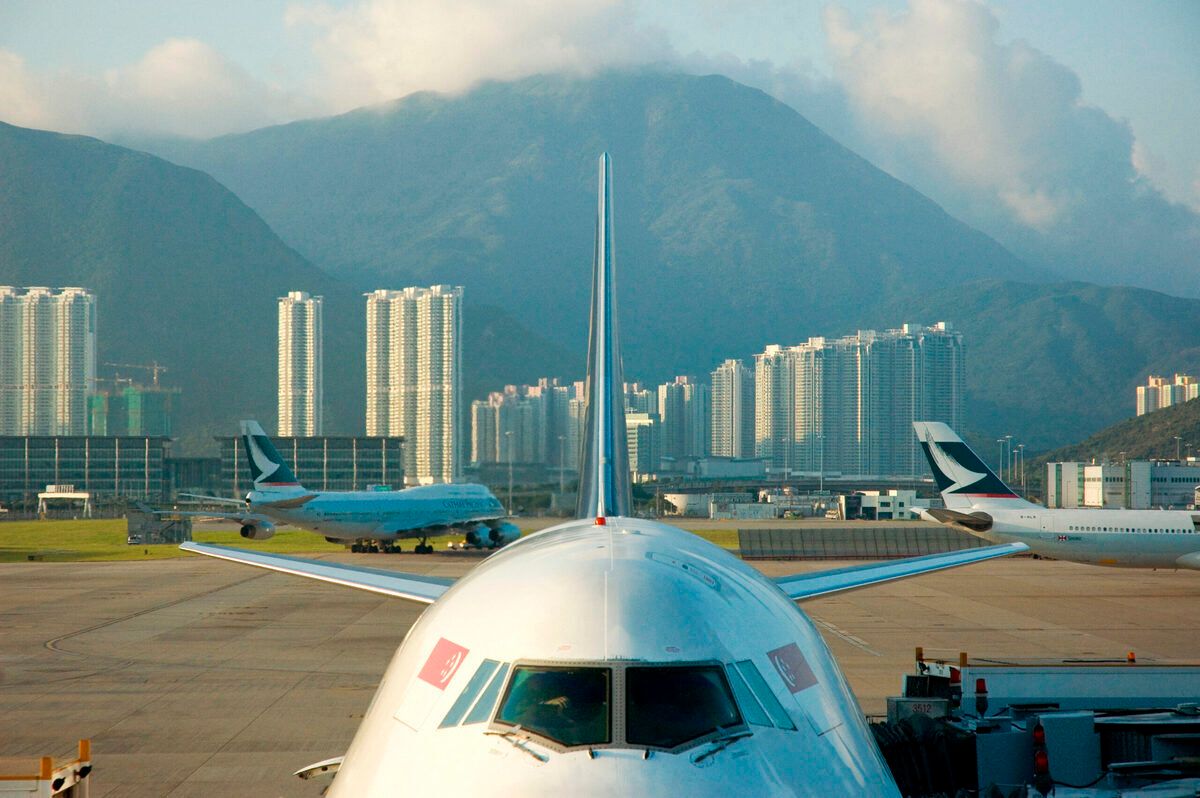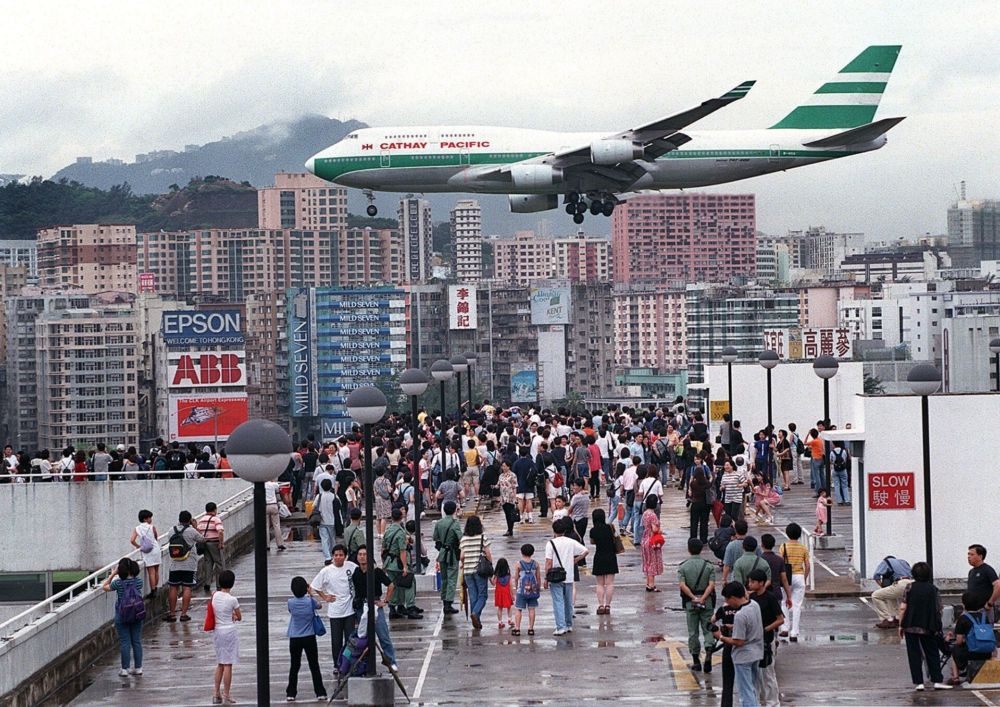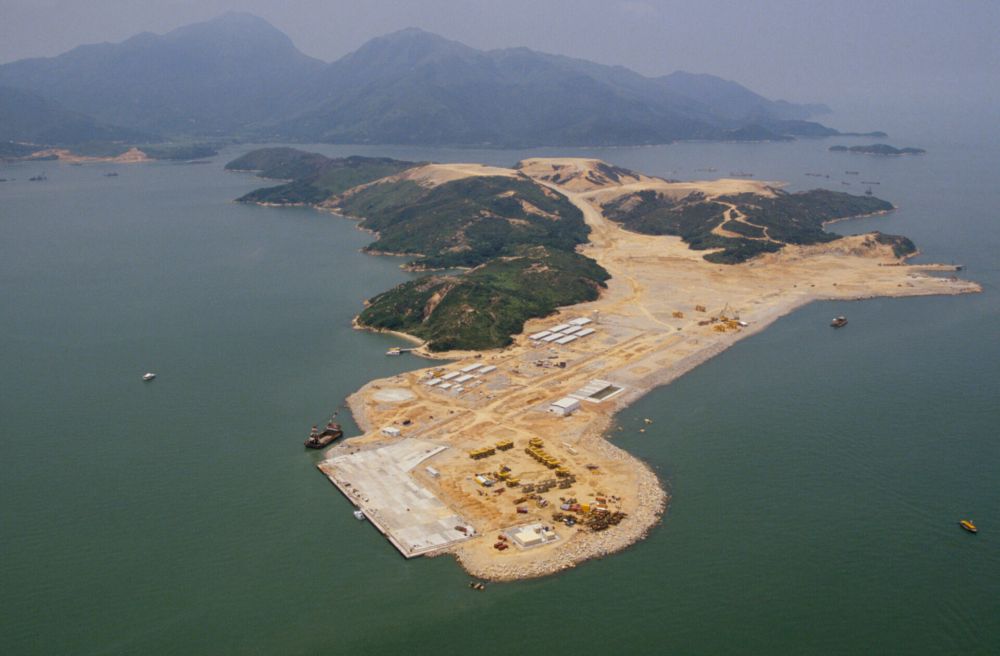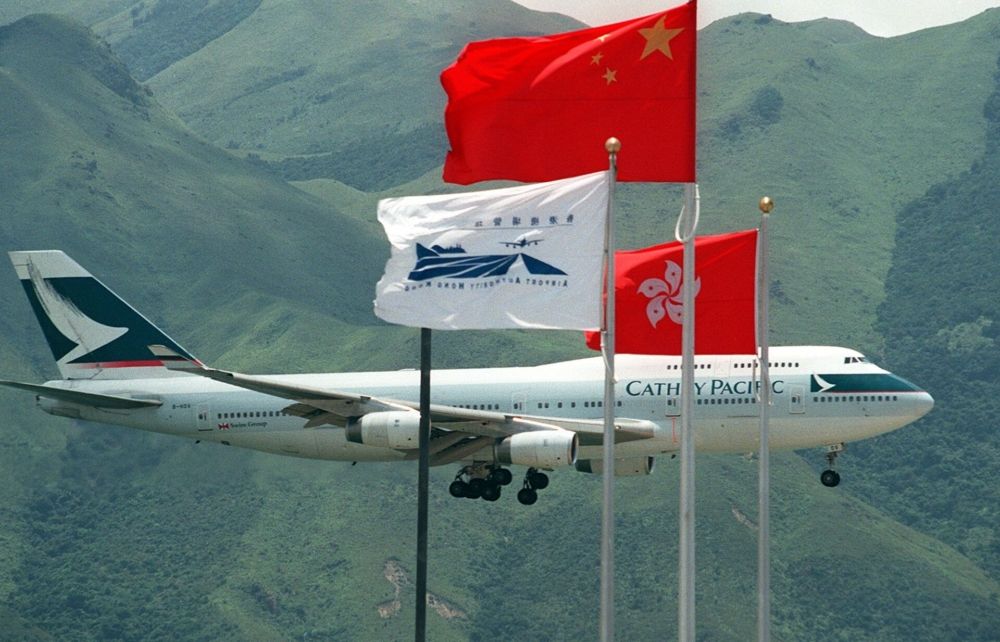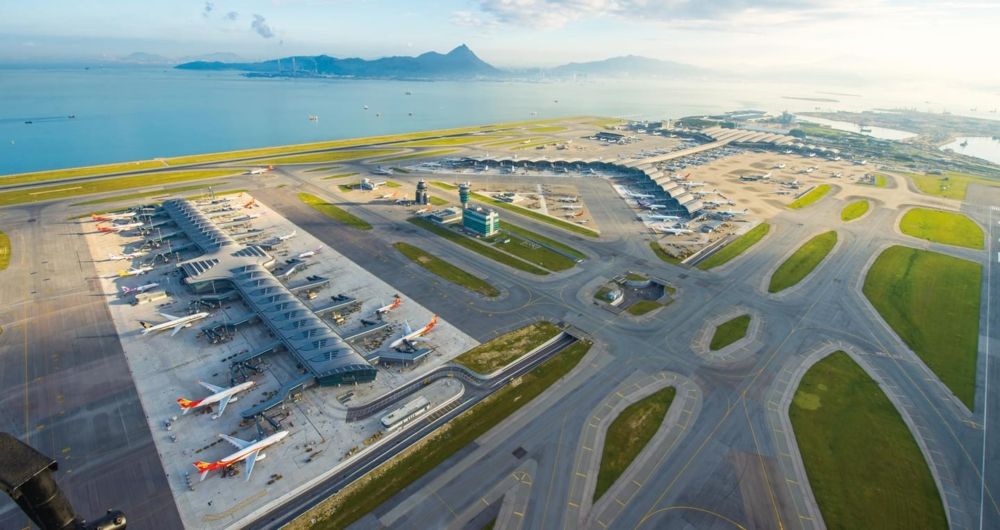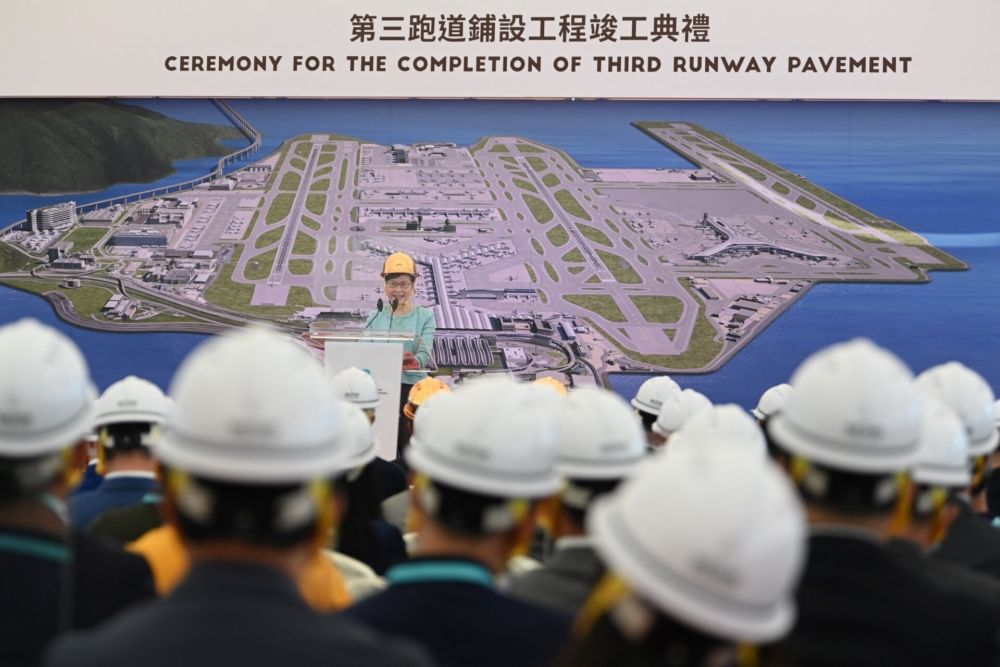Only 23 years old, Hong Kong International Airport has forged its place as one of the busiest and most important international airports in the world. Home to Cathay Pacific and Hong Kong Airlines, it covers an area of 1,255 hectares (4.85 sq mi), and has 90 boarding gates, 77 jet bridges, and handles more than 70 million passengers a year.Hong Kong International Airport was conceived way back in the mid-'70s, but work on the construction would not begin until 15 years later, in 1991. The mega project would see thousands of contractors working around the clock for seven years to complete the airport, a mission that cost a record-breaking $20 billion.
Moving on from Kai Tak
For anyone traveling to the Far East in the ‘80s and ‘90s, Kai Tak was probably the epitome of Asian airports. Massively overcrowded with a hair-raising approach path and delays to one in every three flights, the chaos of the arrival drew an interesting parallel to the busy, bustling city passengers were about to be thrown into.
Although Kai Tak will always hold a special place in many avgeeks hearts, it was clear by this time that it had far outgrown its position. Lack of space meant adding a runway or more gates was out of the question. Its proximity to residential areas meant it was delivering unacceptable levels of noise pollution to more than 300,000 local people.
Plans for the new Hong Kong Airport started long before Kai Tak outgrew itself, however. It was back in 1974 when a planning study identified the island of Chek Lap Kok as a potential replacement site for the airport. It ticked a lot of boxes – it was away from the city center, and flights could be routed over the South China Sea, giving the ability of 24-hour operation.
But it would be 15 years before construction on the new airport actually started. At the time, Hong Kong was still a British territory, but an agreement was reached that as much as possible of the airport would be completed before it was handed over to China in July 1997. This was not an easy project, and would see construction rather rushed in order to get it as near to completion by the deadline.
One incredible construction project
To construct HKIA, both Chek Lap Kok and Lam Chau islands had to be flattened and leveled. An additional 9.38 km2 (3.62 sq mi) of adjacent seabed was reclaimed to create a 12.48-square-kilometer (4.82 sq mi) airport site. To put this in perspective, the constriction of the airport added almost 1% to the entire surface area of Hong Kong!
But building a surface for an airport was not all that needed to be done. Road and rail links needed to be added, which involved the construction of various bridges and tunnels, as well as several significant land reclamation projects. In all, the build involved ten separate projects, 225 construction contracts, and over 1,000 critical interfaces.
It was, and still is, one of the biggest operations ever seen in the aviation industry. In reality, it’s a project that could have taken ten or even 20 years to complete. But it didn’t, and the airport was opened at noon on July 2nd, 1998.
All in, the core project cost more than $20 billion, and to this day, holds the Guinness World Record as the most expensive airport project ever.
First arrival
Just hours after the airport was officially opened by Chinese President and General Secretary of the Communist Party Jiang Zemin, Air Force One delivered United States President Bill Clinton to HKIA. He became the first foreign visitor to set foot on the airport. Commercial operations began four days later.
The day before the opening of HKIA was a mega operation in itself. Overnight, the switch from the old airport to the new picked up pace. Some 1,000 lorries and 70 giant barges worked all through the night to ferry equipment from Kai Tak to the new airport, from body scanners to baggage trucks and more.
On July 6th, 1998, Cathay Pacific landed a Boeing 747-400, flight 889 from New York, to become the first commercial service to arrive at the new airport. It wasn’t supposed to be this flight – another Cathay flight, CX 292 from Rome, was scheduled to be the first arrival, but was pipped by the incoming New York service instead.
Teething troubles
Even on that first day of commercial operations, the cracks in the rapid construction were starting to show. The flight information display systems suddenly went blank. Exit gates and baggage conveyor belts were not always functional. Lifts and escalators broke down, overloaded with huge crowds visiting the new terminal.
The end result was a somewhat chaotic first day, with planes stranded on the apron and passengers waiting hours for baggage. The chaos continued into days two and three, but by the third day, the longest delay was down to two hours, compared to four hours on the second. Things were beginning to bed in.
But the rushed opening was apparent in a number of areas of the airport. Cathay’s executive lounge was not open, and wouldn’t be until mid-August. Japan Airlines’ lounge was open, but its phone booth lacked any phone. It took six months for the new airport to fully function without issue. Nevertheless, despite the teething troubles, Hong Kong International was open for business.
HKIA today
Hong Kong International became a busy and important international hub. In 2015, it was the eighth busiest in the world by passenger traffic, processing more than 68 million passengers in that year. It held that position until 2019, when large scale protests saw operations disrupted and hundreds of flight cancellations.
The pandemic-induced shutdown of 2020 saw it slip out of the world’s 50 busiest airports list altogether. In total, the airport saw 97.5% fewer passengers that year than it had previously, with just 118,000 passing through the facility. Today, things are starting to pick up, with 227,000 passengers passing through in September 2021. The average daily passenger traffic for 2021 so far is around 7,000, just 5% of its pre-COVID level. With strict quarantine requirements and zero-tolerance policies still in place, it will take some time to get back to where it once was.
Nevertheless, plans are in place for future development at the airport. The Master Plan 2030, set out in 2011, looked to improve overall capacity via one of two options. One would see it stick with a two-runway operation, but with enhancements to the terminal and apron facilities to increase capacity at the airport. Option two would see a third runway added through more land reclamation, with additional terminals, airfield and apron built on the new land.
The Hong Kong government has opted for option two, and work has already begun on the third runaway for HKIA. The estimated cost of this construction comes in at more than HK$140 billion ($18 billion). The new runway was completed earlier this year, and is expected to enter service in 2022, two years ahead of schedule.

